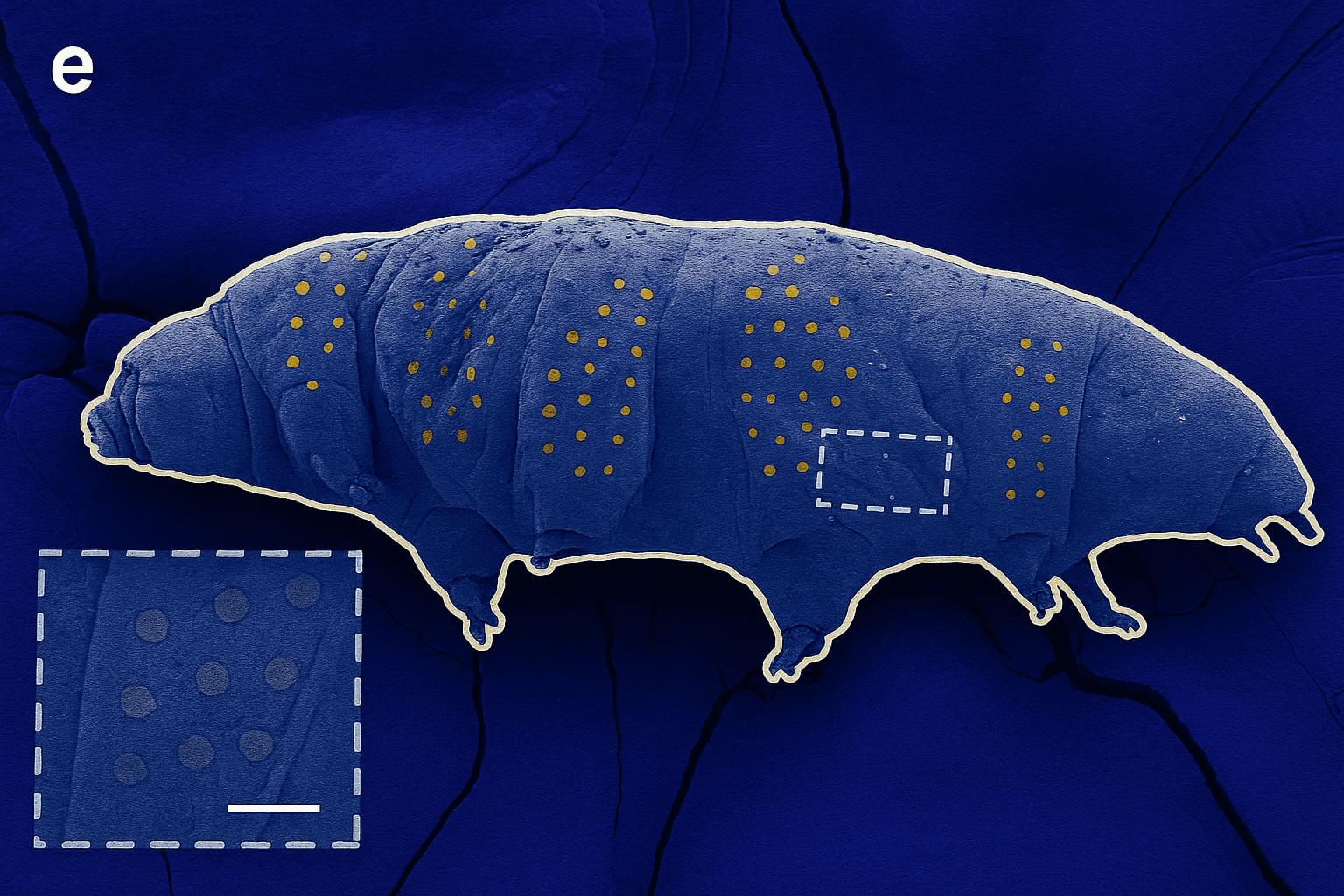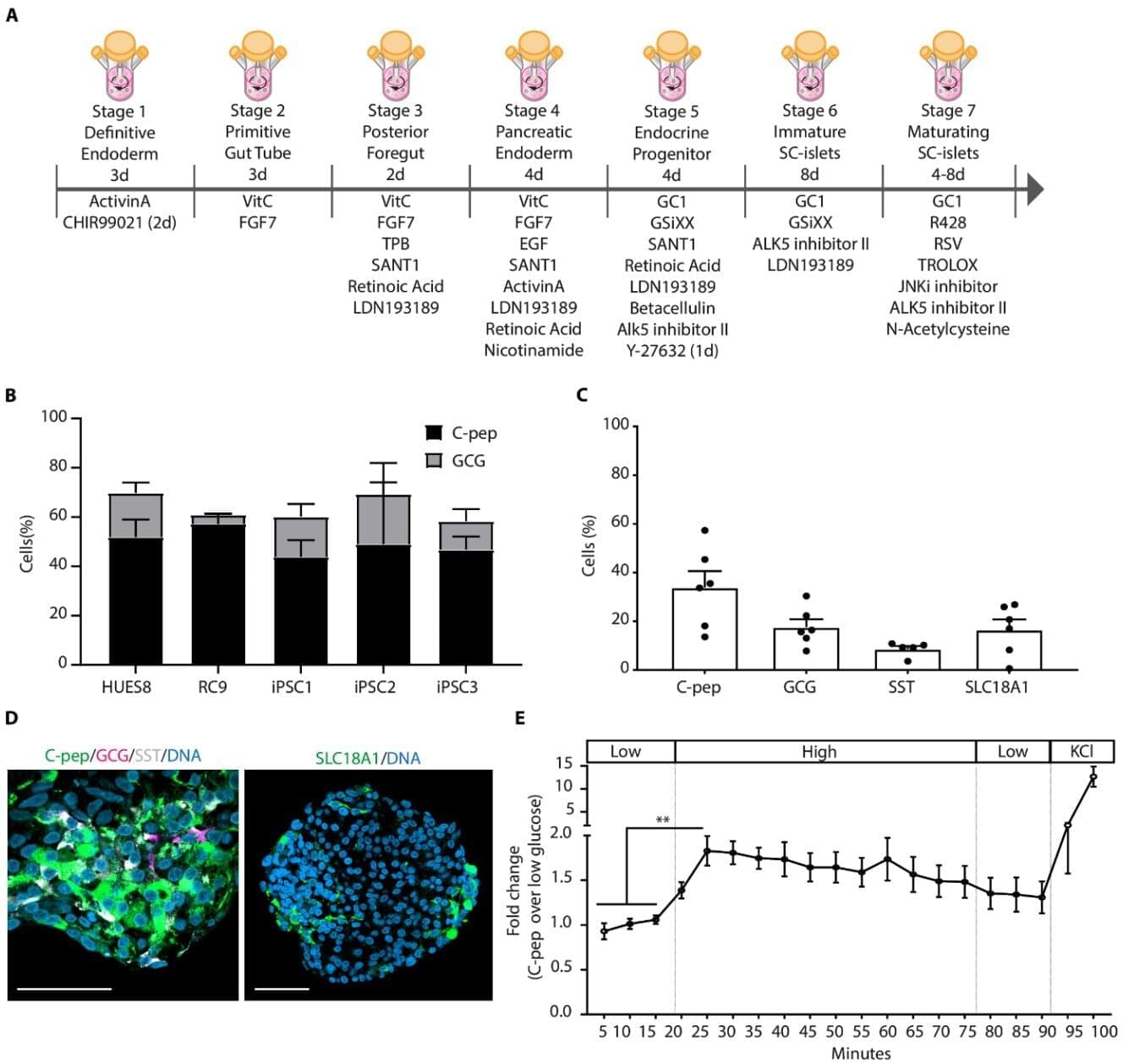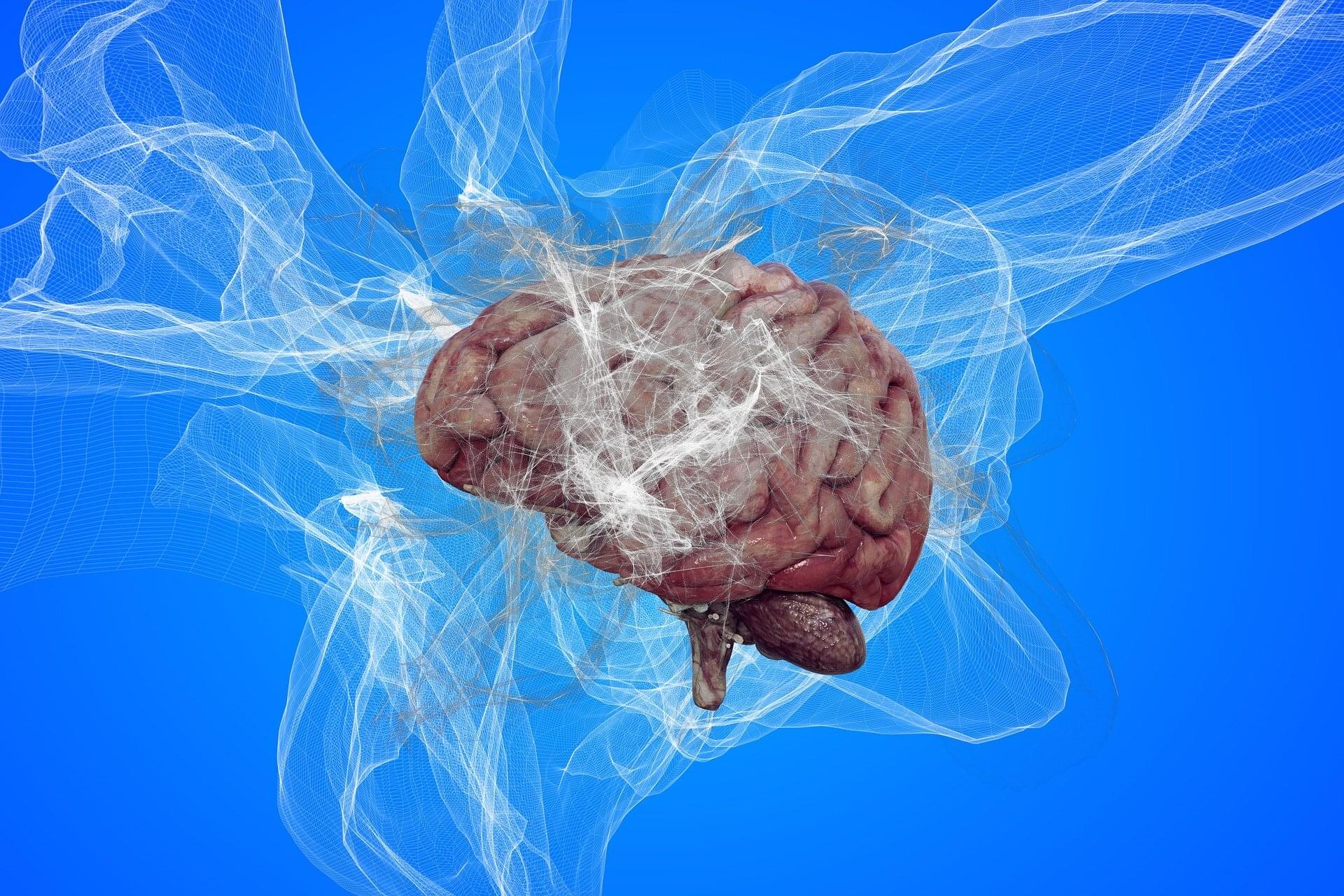Tardigrades just got cooler.



A new study involving over 700 older adults suggests that taking one gram of omega-3 daily may help slow biological aging, with effects visible in molecular markers known as epigenetic clocks.
When combined with vitamin D and regular exercise, the anti-aging benefits became even more pronounced, lowering the risks of frailty and cancer as well.
Omega-3 linked to slower aging in humans.
Neil Steinberg and Mark Jonathan Harris are both acclaimed filmmakers and through a partnership with Generation Entertainment, The John A. Hartford Foundatio…

Stem cell-derived pancreatic islets are being studied as a rich transplantable source for insulin production, a therapeutic for type 1 diabetes that overcomes the need to obtain islet cells from deceased donors.
The first attempts to transplant islet cells to treat type 1 diabetes began half a century ago. Doctors then sought the pancreatic tissue of deceased donors from which islet-producing tissue was removed for transplants. The islets produce life-saving insulin. Substantial advancements and increased success rates have led to islet-cell transplants becoming an approved therapy in Canada and Europe. The technique is still considered investigational in the United States.
But in a series of new advances, a team of endocrinologists and regenerative medicine specialists in the Netherlands has developed methods that improve the production of stem cells used to generate insulin-making islets.

Lithium button cells with electrodes made of nickel-manganese-cobalt oxides (NMC) are very powerful. Unfortunately, their capacity decreases over time. Now, for the first time, a team has used a non-destructive method to observe how the elemental composition of the individual layers in a button cell changes during charging cycles.
The study, published in the journal Small, involved teams from the Physikalisch-Technische Bundesanstalt (PTB), the University of Münster, researchers from the SyncLab research group at HZB and the BLiX laboratory at the Technical University of Berlin. Measurements were carried out in the BLiX laboratory and at the BESSY II synchrotron radiation source.
Lithium-ion batteries have become increasingly better. The combination of layered nickel-manganese-cobalt oxides (NMC) with a graphite electrode (anode) has been well established as the cathode material in button cells and has been continuously improved. However, even the best batteries do not last forever; they age and lose capacity over time.
Lately, there’s been growing pushback against the idea that AI will transform geroscience in the short term.
When Nobel laureate Demis Hassabis told 60 Minutes that AI could help cure every disease within 5–10 years, many in the longevity and biotech communities scoffed. Leading aging biologists called it wishful thinking — or outright fantasy.
They argue that we still lack crucial biological data to train AI models, and that experiments and clinical trials move too slowly to change the timeline.
Our guest in this episode, Professor Derya Unutmaz, knows these objections well. But he’s firmly on Team Hassabis.
In fact, Unutmaz goes even further. He says we won’t just cure diseases — we’ll solve aging itself within the next 20 years.
And best of all, he offers a surprisingly detailed, concrete explanation of how it will happen:
building virtual cells, modeling entire biological systems in silico, and dramatically accelerating drug discovery — powered by next-generation AI reasoning engines.
🧬 In this wide-ranging conversation, we also cover:
✅ Why biological complexity is no longer an unsolvable barrier.
✅ How digital twins could revolutionize diagnosis and treatment.
✅ Why clinical trials as we know them may soon collapse.
✅ The accelerating timeline toward longevity escape velocity.
✅ How reasoning AIs (like GPT-4o, o1, DeepSeek) are changing scientific research.
✅ Whether AI creativity challenges the idea that only biological minds can create.
✅ Why AI will force a new culture of leisure, curiosity, and human flourishing.
✅ The existential stress that will come as AI outperforms human expertise.
✅ Why “Don’t die” is no longer a joke — it’s real advice.
🎙️ Hosted — as always — by Peter Ottsjö (tech journalist and author of Evigt Ung) and Dr. Patrick Linden (philosopher and author of The Case Against Death).

In a demographically diverse sample of healthy people, Cornell researchers found dramatic changes over the human lifespan in the brain’s “blue spot”—a tiny region involved in cognition and believed to be the first affected by neurodegenerative conditions including Alzheimer’s disease.
Using specialized MRI scans to measure the intensity of neuromelanin, a pigment that gives the locus coeruleus (LC) its blue color, the research team observed an inverted U-shaped curve that peaked in later middle age before dropping off sharply, a finding that helps characterize healthy aging patterns.
Maintaining a stronger blue signal after age 60 was associated with better cognitive performance, according to the study involving 134 participants aged 19 to 86. Because of the participants’ diversity, including about 40% who were non-white, the researchers also discovered higher peaks among Black participants and women, groups known to be more susceptible to Alzheimer’s.

As humans age, particularly after middle age, their brain functions, cognitive abilities and memory can deteriorate to varying degrees. Aging-related disorders marked by cognitive decline, particularly dementia, have become increasingly widespread over the past decades.
Estimates suggest that the number of individuals diagnosed with dementia could increase from 55 million in 2019 to around 139 million by 2050. Understanding the factors contributing to cognitive decline and devising methods to detect the first signs of dementia is thus of the utmost importance, as it could help to reliably pick up its emergence and plan therapeutic interventions accordingly.
In recent years, some studies have found a link between people’s ability to perceive and identify odors (i.e., olfactory function) and their cognitive abilities as older adults. While the relationship between olfactory dysfunction and cognitive decline is now well-documented, whether one causes the other or they are the result of similar aging-related or neurodegenerative mechanisms remains unclear.
BiOptimizers Magnesium Breakthrough 10% with code Modern10 https://bioptimizers.com/modern. This video brought to you by BiOptimizers. Here Dr Michael Lustgar…
Join us on Patreon! https://www.patreon.com/MichaelLustgartenPhD
Discount Links/Affiliates:
Blood testing (where I get the majority of my labs): https://www.ultalabtests.com/partners/michaellustgarten.
At-Home Metabolomics: https://www.iollo.com?ref=michael-lustgarten.
Use Code: CONQUERAGING At Checkout.
Clearly Filtered Water Filter: https://get.aspr.app/SHoPY
Epigenetic, Telomere Testing: https://trudiagnostic.com/?irclickid=U-s3Ii2r7xyIU-LSYLyQdQ6…M0&irgwc=1
Use Code: CONQUERAGING
NAD+ Quantification: https://www.jinfiniti.com/intracellular-nad-test/